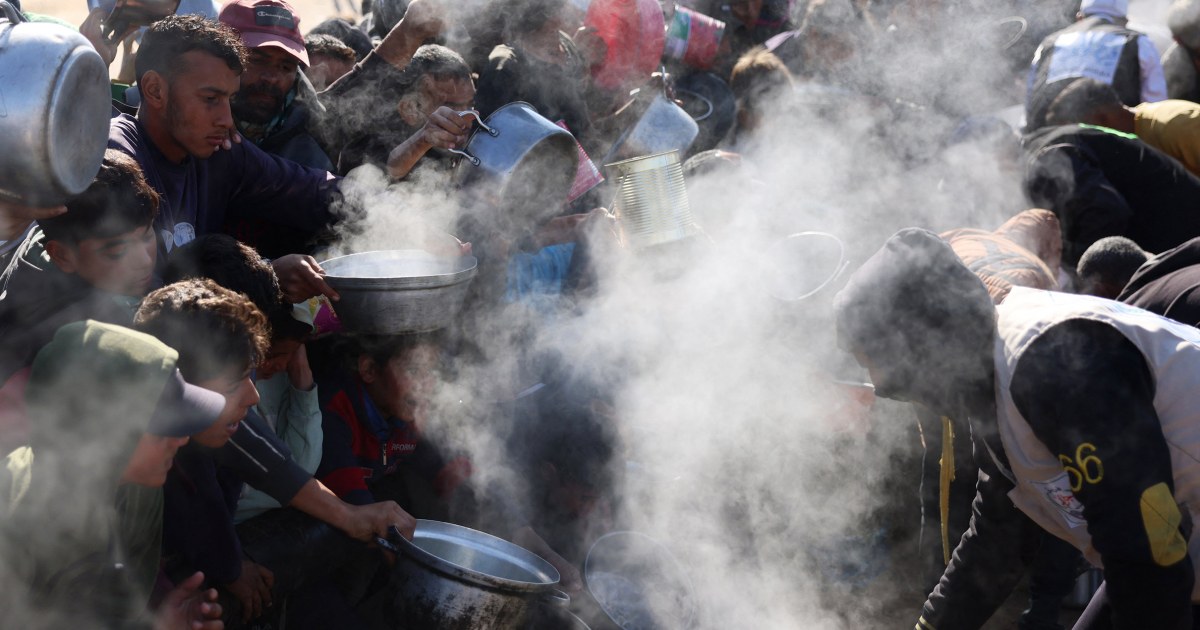World
US sends guided missile submarine to Middle East amid Israel-Iran tensions

“Secretary Austin reiterated the United States’ commitment to take every possible step to defend Israel and noted the strengthening of US military force posture and capabilities throughout the Middle East in light of escalating regional tensions,” the statement added.
The US military had already said it will deploy additional fighter jets and navy warships to the Middle East as Washington seeks to bolster Israeli defences.
It wasn’t clear on Sunday what Austin’s latest order means, or how much more quickly the Lincoln will steam to the Middle East. The carrier has F-35 fighter jets aboard, along with the F/A-18 fighter aircraft that are also on carriers.
Pat Ryder, Pentagon press secretary, also did not say how quickly the USS Georgia would get to the region.
Ismail Haniyeh, the political leader of Iran-backed Hamas, was assassinated in the Iranian capital Tehran on July 31, an attack that drew threats of revenge by Iran against Israel, which is fighting the Palestinian Islamist group in Gaza. Iran blamed Israel for the killing. Israel has not claimed responsibility.
The assassination and the killing of the senior military commander of the Iran-backed Lebanese group Hezbollah, Fuad Shukr, by Israel in a strike on Beirut, have fuelled concern the conflict in Gaza was turning into a wider Middle East war.
Iran has said the US bears responsibility in the assassination of Haniyeh because of its support for Israel.
Reuters reported several US and coalition personnel were wounded in a drone attack on Friday in Syria, in the second major attack in recent days against US forces amid soaring tensions in the Middle East.
Meanwhile, Hamas called on US, Qatari and Egyptian mediators to implement a ceasefire plan for Gaza put forward by US President Joe Biden, instead of holding “more negotiations”.
Hamas “demands that the mediators present a plan to implement what they proposed to the movement … based on Biden’s vision and the UN Security Council resolution, and compel the occupation (Israel) to comply, rather than going through more negotiation rounds or new proposals,” the Palestinian group said in a statement on Sunday.
Mediators have invited both Israel and Hamas for a round of negotiations on Thursday.
On May 31, Biden unveiled what he said was a three-stage plan for a ceasefire in Gaza.
The first phase of the plan includes a “full and complete ceasefire” lasting six weeks, with Israeli forces withdrawing from “all populated areas of Gaza”.
Hamas would release “a number” of hostages captured in the October 7 attacks, including women, the elderly and the wounded. The remains of some hostages who had been killed would also be returned.
Hundreds of Palestinian prisoners would be released in exchange.
Palestinian civilians would be allowed to return to their “homes and neighbourhoods” throughout Gaza, including in the north, which has been devastated by months of Israeli bombing.
During the initial six-week period, Israel and Hamas would “negotiate the necessary arrangements to get to phase two, which is a permanent end to hostilities”.
The ceasefire would also be extended if the negotiations continue, with mediators working to ensure they continue, Biden said at the time.
In phase two, also lasting around another six weeks, Israeli forces would completely withdraw from Gaza.
Hamas would release “all remaining living hostages” including male Israeli soldiers. This has been a key sticking point for Hamas in the past.
If both sides keep to the deal it will lead to the “cessation of hostilities permanently”, Biden said, quoting what he said had been an Israeli proposal.
In the third and final stage, a major reconstruction and stabilisation plan for Gaza would begin, backed by the US and the international community.
Additional reporting by Agence France-Presse










